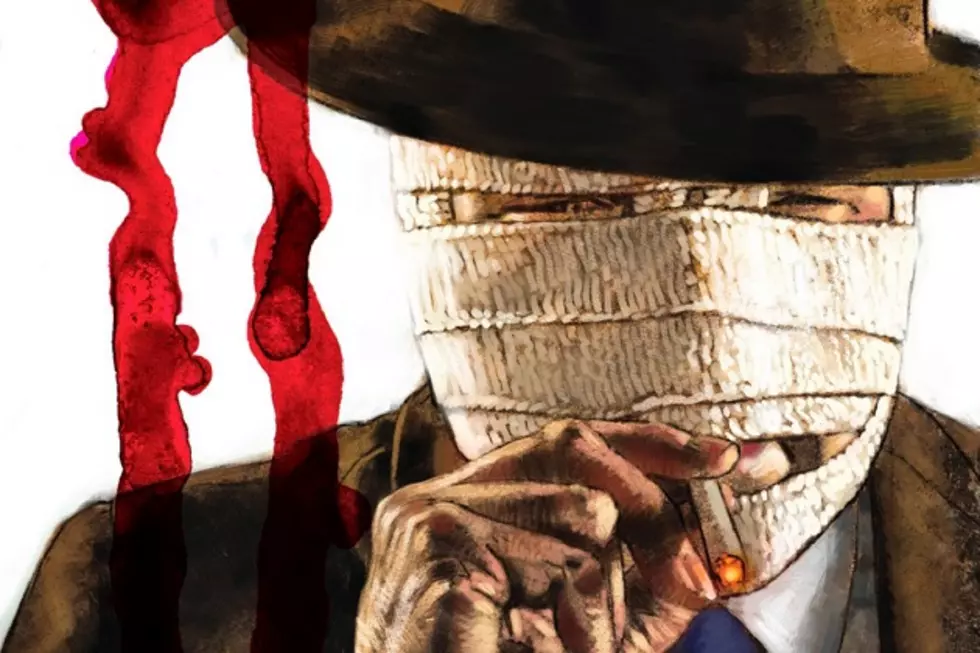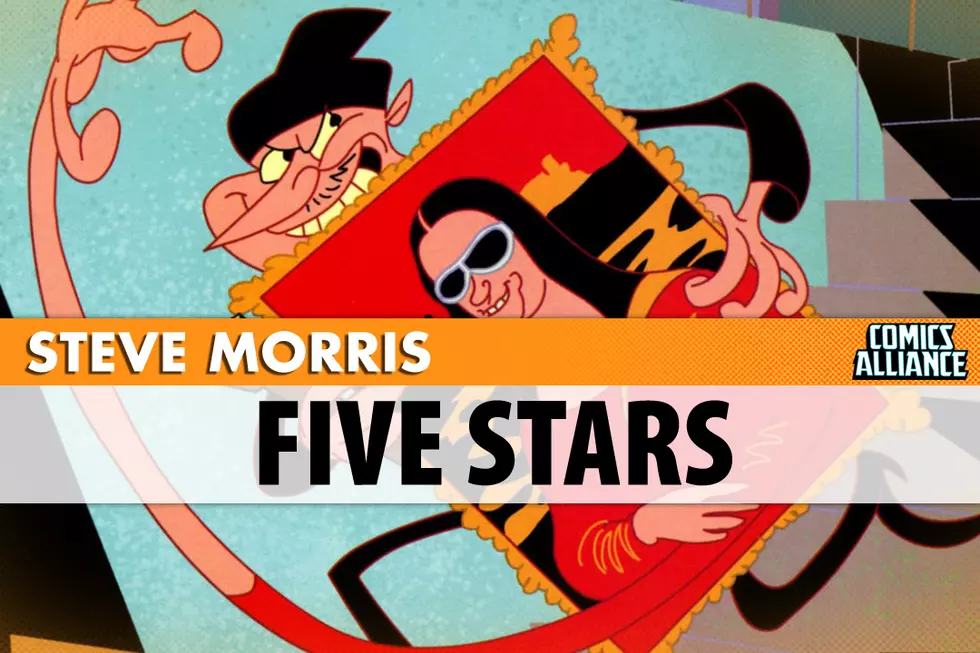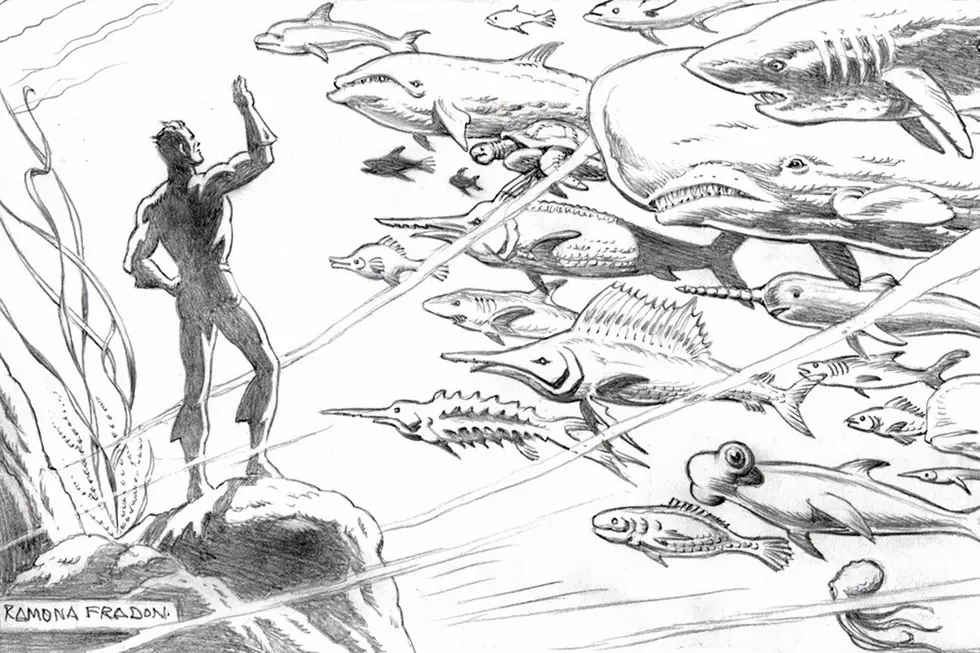
When Bad Guys Go Good: The Reformed Supervillain in Comics
Redemption is a tricky thing. How do people really atone for their transgressions? If it's really an eye for an eye, how could someone possibly make up for murder?
One of the greatest tropes in superhero comics is the villain-turned-hero. Though the meme showed up here and there in the earlier years of comics, it really kicked in around the "modern era" of the late seventies, when darker characters like the Punisher blurred the line between good and bad, and presented readers with a more sophisticated moral conundrum than they were accustomed to while still finding wide appeal.

We see the same theme in the new Incognito: Bad Influences by Ed Brubaker and Sean Phillips (with Val Staples on colors) as Zack Overkill, a former villain buried in the doldrums of Witness Protection, officially becomes of "the good guys," fighting for against the sorts of lowlifes he used to run with. Like all Brubaker/Phillips joints, though, it doesn't take long for someone to throw sand in the gears, putting Zack back in the hot seat, sending him through a maze of intrigue, and confronting the reader with questions of identity and morality. In other words, it's finger-lickin' good, as always, but as Zack gets stacked onto the pile of classic bad guys turned good, how does he compare to other heels-turned-hero?
Plastic Man

Patrick "Eel" O'Brian sat about an inch north of street scum. Orphaned at ten, raised in the alleyways, he ended up pulling regular jobs with a well-respected crew. Safe-cracking was his specialty, and it's safe to say he roughed up a sap or two along the way. All that changed the night the skels hit Crawford Chemical, looking for the safe that chemical companies were required to have by law until the late 1950s. Chased by the night watchman, things got a little too slippery for Eel, and he got doused with a drum of whatever chemical it is that turns humans into plastic. Stretcharmstronganide.
After escaping into the mountains right next to the city, O'Brian is rescued taken in by a monastery. As he recuperates, Eel discovers he can manipulate his body like rubber, sees the errors of his ways, and vows to use his loopy powers in the service of mankind. Plastic Man is born. Not a bad origin story for 1941, and it's interesting that if you take away the monks you end up with something completely different. Bad guy plus chemicals minus the monks equals the Joker.
The Sub-Mariner

Here's something you'll notice quickly: there are many more Marvel characters than DC characters who go from villain to hero. Think about it for a couple of minutes and you'll probably end up with double from the house of ideas. Who knows why. For some reason, Marvel seems to dig it more than the deets, and they got started pretty early. As one of the original Timely characters, Namor the Sub-Mariner made hay early as a villain, terrorizing landwalkers, attacking vessels, tussling with the original Human Torch and generally just being a dick.
When WWII broke out, Namor chose the lesser of two evils and formed The Invaders with Human Torch and Captain America, and fought against Hitler's Nazi empire. In a way, Sub-Mariner established a new blueprint for characters: if there's such a thing as an anti-hero, then there's also an anti-villain. Thus you have Namor and all the ideological bad guys that follow in wake. For instance...
Magneto

As another ideological bad guy, Magneto is very susceptible to the "lesser of two evils" motif's pull. To him, the ultimate evil would always be mankind, and if that meant siding with the X-Men, he could swallow it. But with the switching back and forth and the dying all the time, keeping track of whether he's good or bad is so hard it makes your kidneys bleed. And most of the time, it doesn't make much sense. The original Magneto-is-good storyline was when he discovered that Quicksilver and Scarlet Witch were his children, he had part-human grandchildren, and somehow that made the militant mutant decide to turn himself in for his crimes against humanity. Perhaps realizing the ultimate lameness of this arc, he was returned to antagonist after awhile, but the X-offices have tossed him back and forth ever since, seemingly unaware that the best Magneto is obviously a maniacal one.
Hawkeye

Hawkeye! Why is Hawkeye so cool? His costume isn't cool. Light blue and purple chain mail accented by suspenders? His gimmick isn't that cool – being one of the world's best marksmen is awesome, considering all that he had to overcome, i.e. deafness. Course, when you think about it, deafness would probably help an archer concentrate on the mark. No, what makes Hawkeye cool is his name. Clint Barton. Compared to all the namby-pamby alliterative alter egos – Matt Murdock, Bruce Banner, Reed Richards – Clint Barton is absolutely wicked. That sounds like a superhero already, screw the call sign. If my name was Clint Barton and somebody tried calling me Hawkeye, I'd shove my boot so far up his ass he could taste the purple. After a short, early stint as a reluctant villain, Clint Barton gave up a life of crime for the steady paycheck the Avengers offered, and he's been beating up nerds, stealing girlfriends, and working on his badass Camaro in the driveway ever since.
Suicide Squad

A ragtag group of supervillians formed by the government to perform missions that were almost certainly "suicide runs," John Ostrander's Suicide Squad created a blueprint that comics still loves to use to this day. It's practically formula: take a handful of less-than-respected bad guys, give them a mission with at least a little altruism involved, and make sure a shadowy branch of government is footing the bill. Comics gold. The Thunderbolts and Secret Six would be nothing if not for Suicide Squad and its band of happy psychos. The line between good and evil is thinly chalked, and this spandex-clad Dirty Dozen rides the white stuff like Robert Evans at Roman Polanski's house.
Keep going!
Yes, thank you, there are many more examples of villains gone good, but we're already at a thousand words here and it's not like I'm getting a per-word rate. What are your favorite bad guys gone good?
There will always be those characters who trip across to the other side for awhile, for whatever good story sense or editorial edicts are concocted. For extreme examples, look no farther than Marvel over the past fifteen years. Emma Frost going good might be the most substantial thing Grant Morrison added to The X-Men, and that's saying a lot. She's basically the only interesting character on the team. But Sandman joining the Avengers? Venom getting his own book, in which he's the hero? Ugh. If I was being robbed by a gang of surgically-altered methheads who stabbed me with rusty knives and Venom was the one who showed up to save me, I'd pull the knife out of my thigh and go after that evil-looking sucker. Some bad guys should just stay bad.
More From ComicsAlliance





![‘Justice League Action’ Forges Its Own Path, Delivers On The Action [Review]](http://townsquare.media/site/622/files/2016/12/action_featured.jpg?w=980&q=75)



